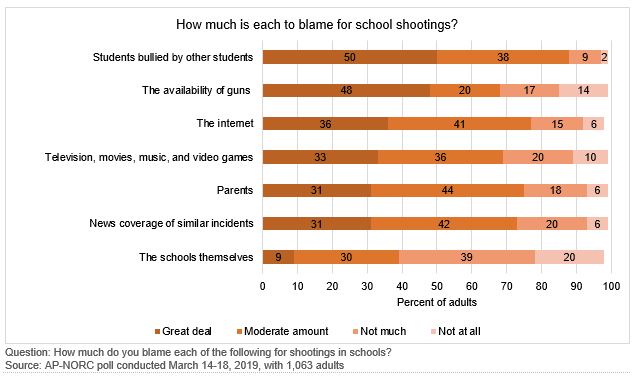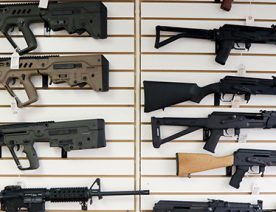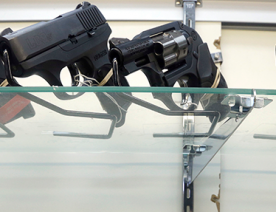
Most parents don’t have a lot of confidence in the ability of schools to handle an active shooter situation, even as various procedures put in place to deter such a threat are seen as effective. Most Americans see schools as less safe than they were 20 years ago. Bullying, the availability of guns, and the internet are most often blamed for school shootings.
On April 20, 1999, 12 students and a teacher were killed in a school shooting at Columbine High School in Colorado. In the 20 years since then, there have been numerous incidents of school shootings, including 32 students and teachers killed at Virginia Tech in 2007, 20 children and 6 teachers killed at Sandy Hook Elementary School in Connecticut, and last year in Parkland, Florida, 17 people were killed at Marjory Stoneman Douglas High School.
Most Americans say safety in schools and colleges has deteriorated over the past 20 years. The survey, which also found that the public sees houses of worship as less safe, was largely conducted in the days after the shooting at two mosques in New Zealand.

Parents of children enrolled in elementary and high school are more likely to think schools have become less safe than adults without children attending school (74% vs. 64%). Overall, 35% of parents feel very confident that their child is safe at school, 43% are moderately confident, and 21% are not too confident.
However, less than half of parents have much confidence in the ability of local law enforcement and schools to deal with an active shooter.

While concerns about school safety and preparedness are prevalent, most Americans do not hold schools responsible for these shootings. Bullying, the availability of guns, and the internet are most often blamed.

Throughout the years, schools have carried out a series of measures intended to prevent shootings and increase security. The public views certain procedures as more effective than others. Over 70% of adults say that schools are more secure when they conduct lockdown drills, have metal detectors, mental health resources, and armed security guards.

Sixty-two percent say random locker searches and 60% said social media monitoring make schools safer, and 52% think random searches of the students help with school security. Parents of children enrolled in schools are more likely to think that these measures increase school safety than are adults without children.
Armed teachers are seen as the least effective way to increase the security in schools. Only 41% of adults say arming trained teachers would make schools safer.
Another question asked about support for a state law allowing trained teachers and administrators to be armed in schools. Overall 41% of the public supports these laws. Republicans are more likely than Democrats to support these laws. Sixty-four percent of Republicans are in support compared to only 23% of Democrats and 45% of independents.
Racial differences also divide respondents on the issue. Only 16% of black respondents would support a state law allowing armed teachers in schools, while 46% of white respondents and 47% of Hispanic respondents favor such a law.
Those who report having a gun in their household are more likely to support arming teachers. Fifty-eight percent of those with a gun in the house favor a law allowing armed teachers compared to 32% of people who do not have a gun.
The nationwide poll was conducted March 14-18, 2019, using the AmeriSpeak® Panel, the probability-based panel of NORC at the University of Chicago. Online and telephone interviews using landlines and cell phones were conducted with 1,063 adults. The margin of sampling error is plus or minus 4.1 percentage points.



